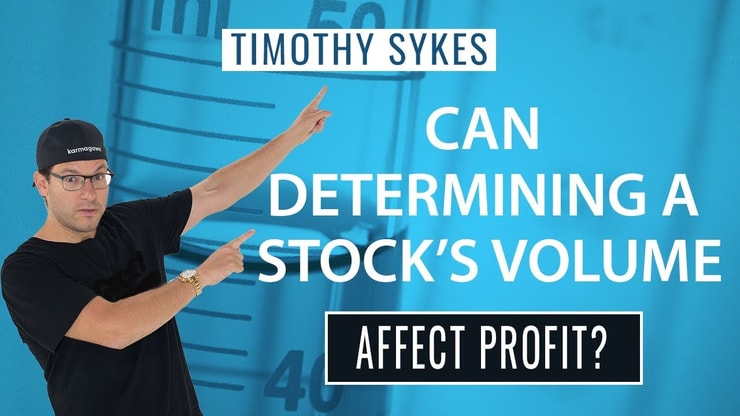On Balance Volume (OBV) is a staple in the arsenal of many traders due to its ability to aggregate volume changes over time, attributing a cumulative total that aids in the prediction of stock price movements. This indicator is especially valued for its simplicity and effectiveness in revealing whether volume is flowing into or out of a security. By understanding OBV, traders gain insight into the underlying strength or weakness of price movements, which can precede significant price changes.
Read this article to learn how to utilize On-Balance Volume trading strategy to predict stock price movements with greater accuracy!
I’ll answer the following questions:
- What is On-Balance Volume?
- How is On-Balance Volume calculated?
- Why do traders favor On-Balance Volume?
- What are the predictive values of On-Balance Volume?
- How can On-Balance Volume identify trends and confirm price movements?
- How can On-Balance Volume be implemented into your trading strategy?
- What are the limitations of On-Balance Volume?
- How reliable are OBV signals in thin-volume markets?
Let’s get to the content!
Table of Contents
What Is On-Balance Volume?
The On-Balance Volume (OBV) indicator is a momentum tool that uses volume flow to predict changes in stock price. Developed by Joseph Granville in the 1960s, OBV is based on a cumulative total of volume; it adds volume on up days and subtracts on down days. The aim is to measure the pressure of buying and selling and to assume that changes in OBV precede price movements.
The key concept behind OBV is to detect momentum by looking at how volume can precede price movements. This insight is invaluable because it helps traders anticipate potential price movements based on how volume is trending.
These are the unique benefits of OBV:
- Volume-Price Convergence: OBV helps in identifying periods when volume confirms price trends, offering a robust signal of continuation or reversal.
- Early Warning Signals: It can provide early warnings about price increases or declines as it often changes direction before price.
- Ease of Interpretation: Unlike many complex indicators, OBV provides clear, actionable data, making it accessible for traders at all skill levels.
- Market Sentiment Gauge: It acts as a sentiment indicator, showing whether money is entering or leaving the market.
How Is On-Balance Volume Calculated?
Calculating OBV involves a straightforward formula that helps traders track momentum using volume data:
- Start with an arbitrary number for OBV on the initial day of analysis.
- If today’s closing price is higher than yesterday’s, add today’s volume to the previous OBV.
- If today’s closing price is lower than yesterday’s, subtract today’s volume from the previous OBV.
- If today’s closing price equals yesterday’s, the OBV does not change.
Steps to apply the OBV formula:
- Identify the closing prices and volumes for the period you are analyzing.
- Use the formula sequentially to build an OBV line alongside the price chart.
- Analyze the OBV line for trends and divergences from the price line.
Why Traders Favor On-Balance Volume
On-Balance Volume (OBV) is widely favored among traders for its straightforward approach to integrating volume and price action into a single momentum indicator. This popularity is rooted in OBV’s ability to act as a predictive tool for market movements, signaling potential reversals or continuations of trends before they become apparent through price changes alone.
Volume is the most important there is next to price. Here’s why:
My extensive experience in teaching trading strategies underscores the efficacy of OBV in identifying key shifts in market sentiment, often marked by significant volume changes that precede price adjustments. Traders appreciate OBV for its utility in confirming trends through the accumulation and distribution phases, helping them make informed decisions on when to enter or exit trades, particularly in markets characterized by well-defined trends like stocks and ETFs.
Simplicity and Accessibility
OBV’s straightforward calculation eliminates complex mathematical processes, making it easily accessible for traders and widely available across trading platforms.
More Breaking News
- 3 Robinhood Penny Stocks Moving on Bitcoin & Trump News
- Is Circle Internet Group Undervalued?
- Lucid Group Strengthens EV Supply Chain with New Graphite Deal
Predictive Value
OBV is prized for its predictive capabilities, often indicating potential market moves before they occur.
- OBV rising while prices remain flat or fall may indicate an upcoming price increase.
- OBV falling while prices are stable or rising could suggest a potential price drop.
Versatility Across Markets
OBV proves effective across various markets, including stocks, forex, and commodities.
Adjustments for volatility and market size may be necessary to optimize OBV’s effectiveness across different markets.
Importance of OBV in Technical Analysis

2025 Millionaire Media, LLCIn the realm of technical analysis, the On-Balance Volume (OBV) holds a critical role as it amalgamates price movement with volume, offering a holistic view of market dynamics. This integration helps analysts and investors discern the strength of support and resistance levels, providing insights into whether these levels are likely to hold or break based on volume trends.
From my experience, employing OBV within technical analysis workflows enhances the ability to spot potential trend reversals and trend continuations early, making it an indispensable tool for anyone engaged in trend-following or trend-reversal strategies. The indicator’s relevance extends across different assets and markets, allowing for versatile applications whether in evaluating stocks, ETFs, or other securities.
How OBV Can Help Identify Trends and Confirm Price Movements
OBV helps in identifying new trends and confirming the momentum behind price movements.
- Trend Identification: Rising OBV values can indicate bullish uptrends, while falling OBV values may signal bearish downtrends.
- Divergence: A divergence between OBV and price suggests potential reversals. For instance, if price hits a new bottom but OBV does not, it may indicate weakening downward momentum.
For traders focusing on trend confirmation, it’s a good idea to have some market valuation techniques in your pocket like the Fair Value Gap. This approach evaluates the price discrepancies between a stock’s fair value and its market price, offering a strategic edge when paired with volume-based indicators like OBV. Understanding these valuation disparities can lead to more informed decisions, enhancing trade accuracy when used together with the OBV indicator. To deepen your understanding of how to utilize the Fair Value Gap with volume indicators, refer to Understanding the Fair Value Gap in Trading.
Implementing the On-Balance Volume into Your Trading Strategy
Incorporating On-Balance Volume (OBV) into a comprehensive trading strategy can significantly enhance a trader’s ability to gauge market momentum and make more nuanced trading decisions. OBV serves not only as a standalone indicator but also pairs well with other technical tools such as trendlines and oscillators to confirm trend strength and potential price breakouts or breakdowns.
In my teaching, I have always emphasized the importance of using OBV to validate trading signals from other indicators, which helps in minimizing risks and maximizing returns. By analyzing the relationship between price highs and lows alongside volume trends indicated by OBV, traders can better time their entries and exits, effectively using OBV to identify buying or selling pressure before it translates into observable price movement.
OBV as a Standalone Indicator
While OBV can be effective on its own, it is most powerful when used to confirm signals from other indicators or price patterns.
Take the Parabolic SAR (PSAR) for example. PSAR is designed to highlight potential reversal events in market price direction, which can be strategically paired with OBV to validate these shifts. This combination allows traders to enter or exit trades based on the alignment of PSAR signals with OBV trends, creating a robust framework for making decisions in dynamic markets. For detailed steps on using PSAR to enhance your trading strategy with OBV, check out Integrating PSAR Indicator with OBV.
Combining OBV with Other Indicators
OBV pairs well with other technical indicators to form a comprehensive analysis framework.
Effective combinations include OBV with moving averages for trend confirmation or with the Relative Strength Index (RSI) for spotting divergences and confirming trend strength.
The ADX Indicator is another powerful combo with OBV. The ADX helps determine trend strength more definitively than OBV alone. When both indicators confirm the same trend direction, it adds an extra layer of confidence before making trade decisions. Utilizing ADX alongside OBV can help traders filter out less promising signals and focus on the most robust trading opportunities. For an in-depth guide on how to integrate the ADX Indicator into your trading strategy, visit Exploring ADX Indicator Strategies.
Setting Up OBV in Trading Platforms
Most trading platforms include OBV as a standard analytical tool.
- Select OBV from the indicator list.
- Customize the visual style and parameters to match your analysis needs.
- Combine OBV with other indicators to enhance your trading dashboard.
When it comes to trading platforms, StocksToTrade is first on my list.
StocksToTrade is a powerful day and swing trading platform that integrates with most major brokers. I helped to design it, which means it has all the trading indicators, news and information sources, and stock screening capabilities that traders like me look for in a platform.
Grab your 14-day StocksToTrade trial today — it’s only $7!
OBV Limitations and Considerations
While OBV is a robust indicator, it has limitations, particularly in markets with uneven trading volumes or during price consolidations.
Strategies to mitigate these limitations include confirming OBV signals with other types of analysis and using adjusted settings for different market environments.
Key Takeaways

2025 Millionaire Media, LLC- OBV integrates volume and price data to provide a powerful indicator of market trends and sentiment.
- It is straightforward to calculate and can be easily implemented in various trading strategies.
- OBV is versatile and can be adapted for use across different markets.
- Traders should be aware of OBV’s limitations and complement it with other analysis tools for best results.
Trading isn’t rocket science. It’s a skill you build and work on like any other. Trading has changed my life, and I think careers in trading should be open to more people…
I’ve built my Trading Challenge to pass on the things I had to learn for myself. It’s the kind of community that I wish I had when I was starting out.
We don’t accept everyone. If you’re up for the challenge, click on the logo.
I want to hear from you!
Apply to the Trading Challenge here.
Trading is a battlefield. The more knowledge you have, the better prepared you’ll be.
Is the OBV part of your trading toolkit? Write “I’ll keep it simple Tim!” in the comments if you picked up on my trading philosophy!
Frequently Asked Questions
Is On-Balance Volume a Leading Indicator?
Yes, OBV can act as a leading indicator, often predicting future market movements by showing trends in volume changes ahead of price adjustments.
What Timeframe Should I Use with OBV for Day Trading?
For day trading, shorter timeframes like 1-minute to 15-minute charts are typically most effective with OBV to capture quick changes in market sentiment and momentum.
How Reliable are OBV Signals in Thin-Volume Markets?
In markets with thin volume, OBV signals may be less reliable due to the lack of sufficient trading activity to confirm trends. Traders should use additional indicators to validate OBV readings in such environments.
How Does OBV Help in Analyzing Stock Performance?
OBV helps in performance reviews of stocks by tracking cumulative buying and selling pressure through volume changes. Here are a couple examples:
- If OBV is rising while the price of shares is still in a lower range, it may suggest that an upward price breakout is likely as buying pressure accumulates.
- If OBV begins to decline despite stable prices, it could indicate potential selling pressure that might lead to a price drop, guiding investors on when to reconsider their holdings.







Leave a reply